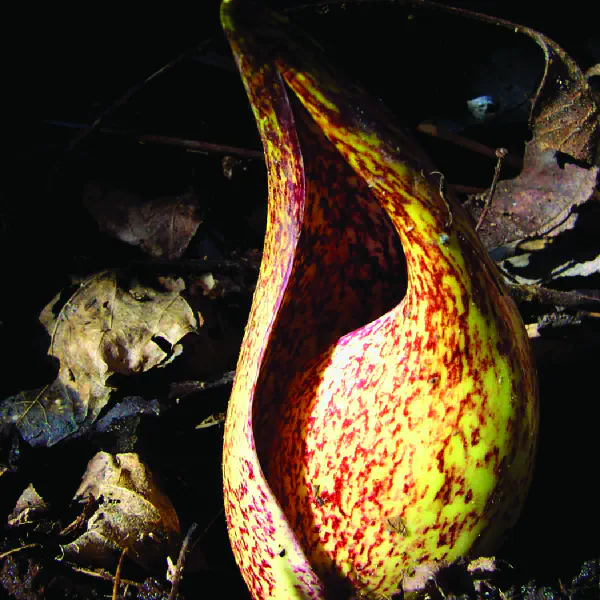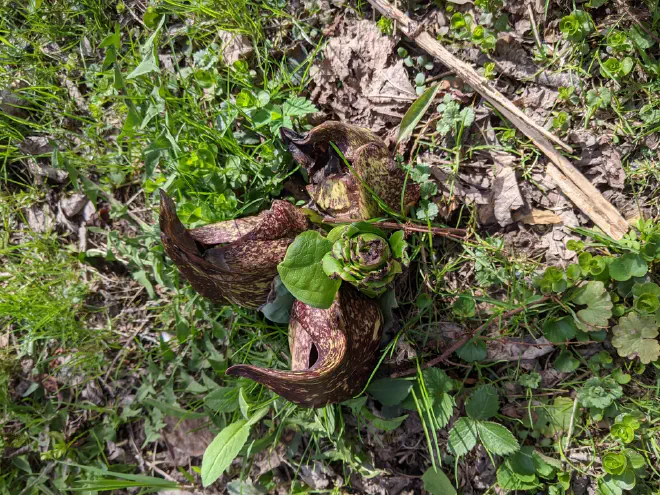Symplocarpus foetidus
Table of Contents

Scientific Classification
| Kingdom: Plantae |
| Phylum: Tracheophyta |
| Class: Liliopsida |
| Order: Alismatales |
| Family: Araceae |
| Genus: Symplocarpus |
| Species: Symplocarpus foetidus |
Conservation Status
Identifying Features
Skunk cabbage flowers are one of the first to bloom in the season, sometimes blooming as early as Febrary, but as late as April. The flowers are small, clustered on a round spadix, and hidden inside a cloak-like purple-brown spathe.
The leaves are large and unfurl after the flowers. They are cabbage-like and have a foul-odor when crushed.

Habitat & Range
These plants are found throughout the Northeastern US and as far west as Wisconsin.
Life Cycle
Skunk cabbage flowers can emerge so early in the year because they are able to produce their own heat in a process called thermogenesis.
Pollinators are attracted to the flower, that smells similar to carrion. Flies, gnats, and other insects carry the pollen between plants. Then, fertilized flowers will turn into fruits. Fruits will become new plants the following year.
When plants lose their leaves at the end of their growing season, they will stay alive and re-emerge the following spring.
Featured image by James Dake.

